The fruits of the lemon tree are one of the most ubiquitous of all citrus fruits because of its various culinary and therapeutic uses, among many other benefits.
Having your own lemon tree will give you a free source of this fragrant and nutritious fruit. Not only that, this small tree gives a burst of bright and cheerful colours as it flowers and its fruits ripen.

The Basics of Lemon Tree
Lemon or Citrus Limon is a species under the flowering plant family Rutaceae. Citrus limon is a small evergreen native to South Asia, particularly in Northeastern India.
Lemon trees are cultivated primarily for their fruit.
This tree is famous for its yellow ellipsoidal fruit with distinct flavour and aroma, as well as good source of vitamins and minerals.
There are several varieties of lemon trees which can be distinguished for the characteristics of their lemon fruit.
Domestic lemon trees grow on the average around 10 to 20 feet (3 to 6 metres) tall and 15 to 20 feet (4.5 to 6 metres) wide.
Bonnie Brae
This lemon tree has oblong fruits with smooth and thin skin. They are also seedless, grown primarily in San Diego County, in the United States.


Eureka
Also known as Four Seasons, the Eureka lemon is one of the most common supermarket lemons.
Young Eureka lemon trees are also available to domestic gardeners.
It can produce flowers and fruits together all year-round.
Eureka lemon trees can grow up to 20 feet (6 metres) tall.
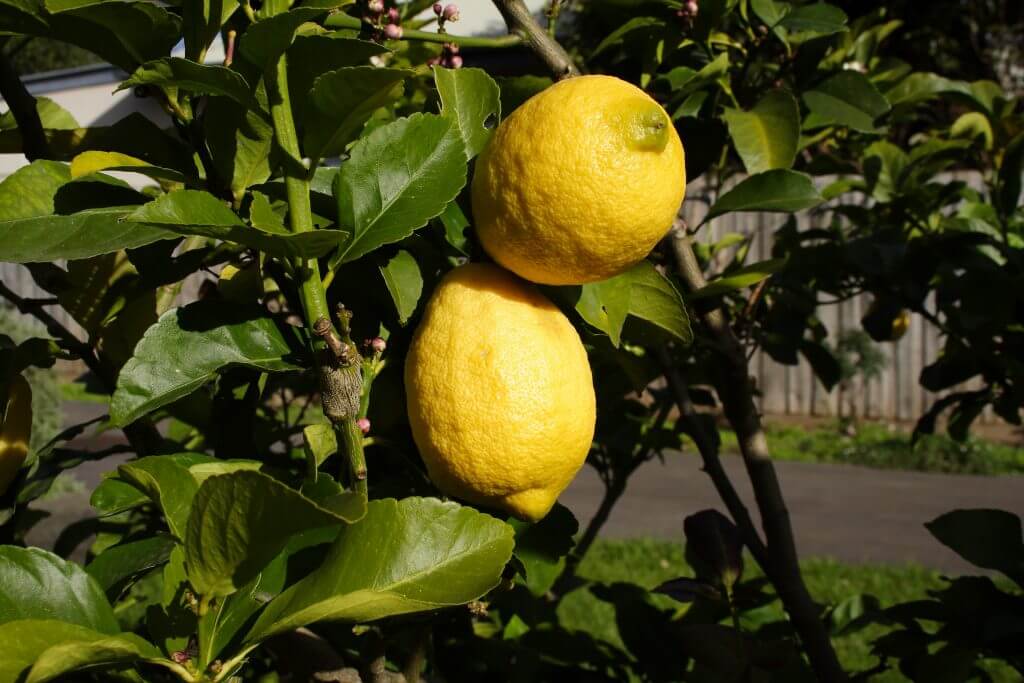

Lisbon Lemon
The fruit of the Lisbon lemon tree, like the Eureka, is also one of the common supermarket lemons.
Its fruit has thinner and smoother skin compared with the Eureka. The Lisbon lemon is either seedless or has very few seeds.
Lisbon lemon trees can grow around 20 to 30 feet (6 to 9 metres).
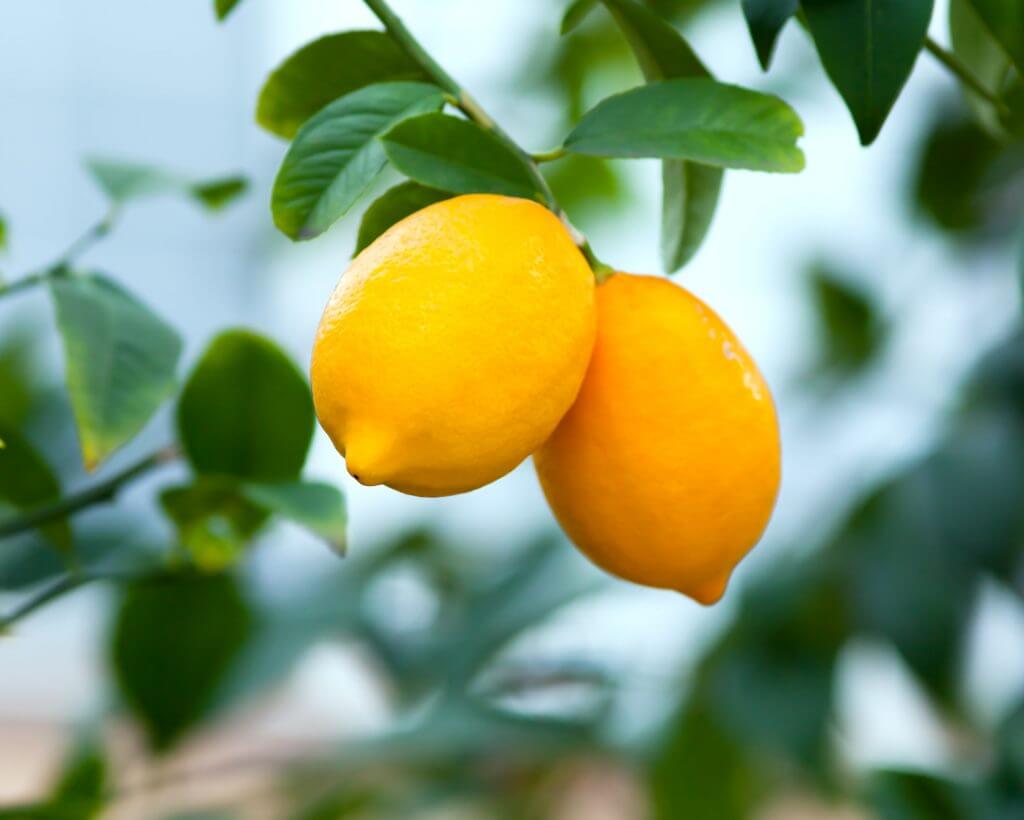

Femminello St. Teresa or Sorrento
This lemon tree is native to Italy.
Its fruit, which is high in lemon oils, is traditionally used for making limoncello.
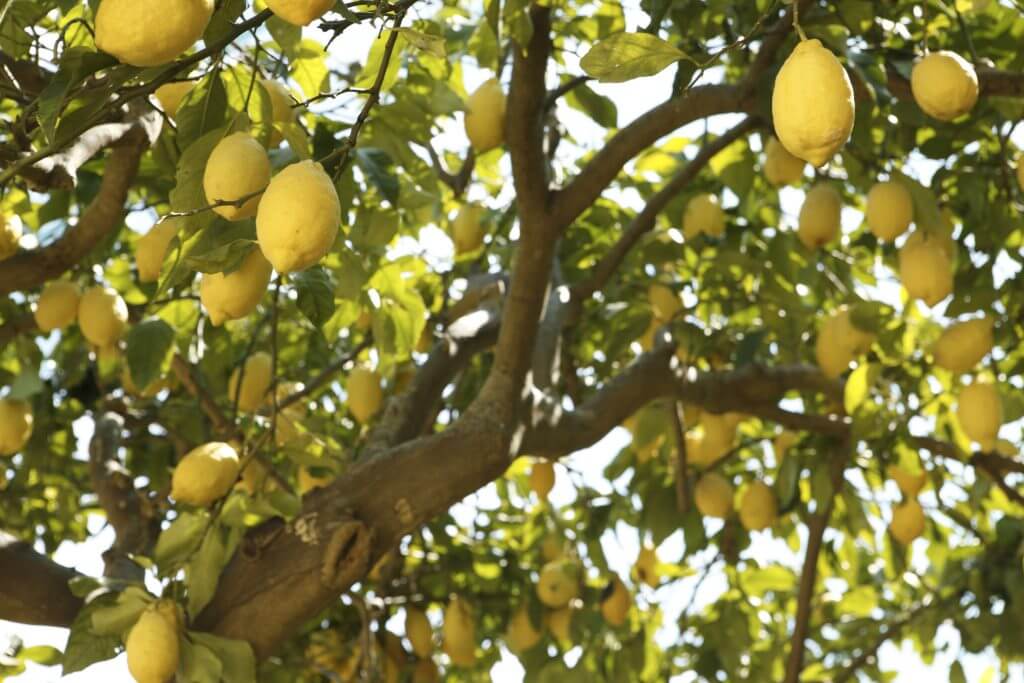

Meyer Lemon
Although technically not a lemon, but they are under the same genus citrus. We have included the Meyer lemon tree in this list because it is also popular as supermarket lemons.
The Meyer lemon is a hybrid native to China, and a cross between mandarin/pomelo and citron.
It was widely grown in California by the mid-1940s, but the original trees were infected with a virus and had to be destroyed. An “Improved Meyer Lemon” that was free of the virus was released in the mid-1970s.
This lemon tree grows to around 6 to 10 feet (2 to 3 metres) tall. It has dark shiny leaves and white flowers with a purple base.
The Meyer lemon fruit is rounder and less acidic than the true lemon tree fruit.
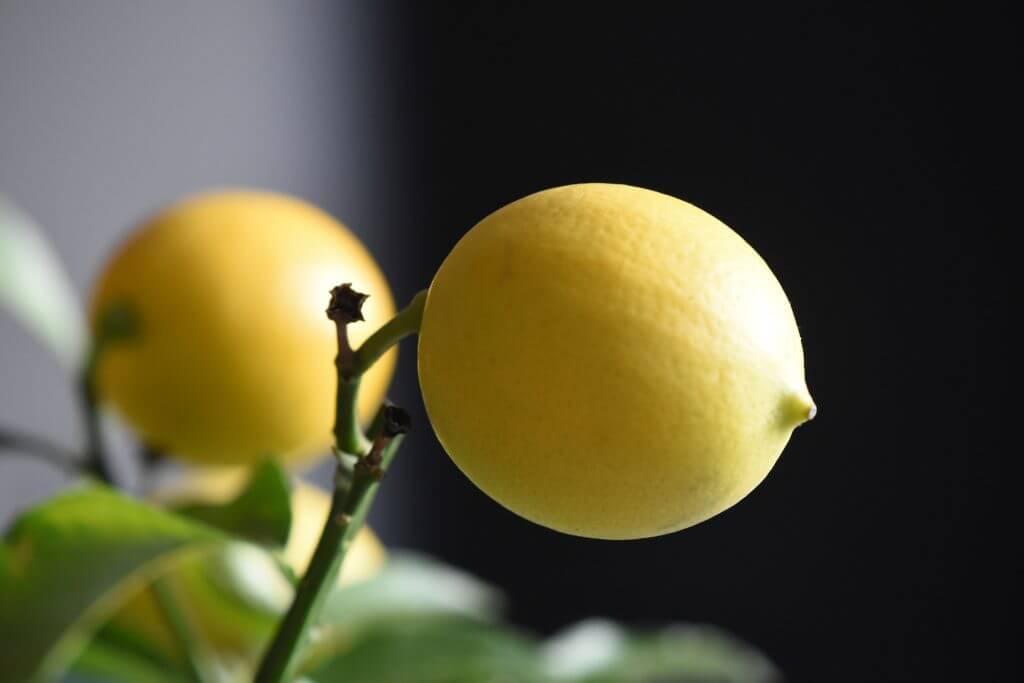

Planting Your Lemon Tree
Lemon trees are sensitive to cold, even more so than most citrus trees.
Choose a position for your lemon tree on the south side of the garden if you are in the northern hemisphere, and the north if you are in the southern hemisphere.
These trees grow best at around 79 to 82 °F (26 to 28 °C).
Most lemon trees need to stay above 55 °F (13 °C), or they will go dormant.
You can also choose to plant your lemon trees indoors or in a greenhouse to keep them away from cold wind and protect them from temperature drop.
Plant your lemon tree in full sun as they need lots of light.
Lemon trees prefer slightly acidic soil of about pH 5.5 to 6.5 but can tolerate a wide range of soil. Choose soil that is well-draining as lemon trees do not like soggy soil.
If planting from a sapling, do not bury all of its roots. Dig a hole for planting your lemon tree that is shallower than its ball, place your lemon tree in the hole and backfill.
Water deeply after planting and mulch to retain moisture. Water newly planted lemon trees every other day, especially in warm climates, until they are established. Keep it moist but make sure that the soil does not become soggy.
If planting from seeds, wait until your seedlings are about 6 to 12 inches (15 to 30 cm) before transplanting them outdoors or to another container.
Caring for Your Lemon Tree
Once your lemon trees are established, approximately a month after transplant, water once a week.
Feed your lemon tree using a mild fertiliser every six months. Make sure to only fertilise from the base of the tree as you do not want to burn the leaves with the fertiliser.
To keep pests off your lemon tree, spray its leaves to remove dust and pests.
Lemon trees do not usually need to be pruned formally. However, you can still prune them to size according to your preference, especially for indoor trees.
Prune dead leaves, stems, flowers, or fruits from your lemon tree. Snip away all diseased parts to avoid the spread on the tree and other plants.
Protect young trees from frost by covering them with a tarp or blanket.
Common Problems with Lemon Tree
Overwatering can cause stress on your lemon tree. Shallow watering can also pose problems, so avoid placing your lemon trees on lawns with sprinklers to prevent root rot.
Lemon trees bring a lot of benefits from its fruits, and even through its leaves, but these citrus plants are not free from pests and diseases.
Citrus Canker
Lemon trees can get citrus canker, which is a highly contagious infection. The citrus canker will result in leaf loss, fruit drop, and die back.
A copper fungicide can be used as a prevention for the citrus canker lemon tree disease. A lemon tree infected by the citrus canker will need to be destroyed.
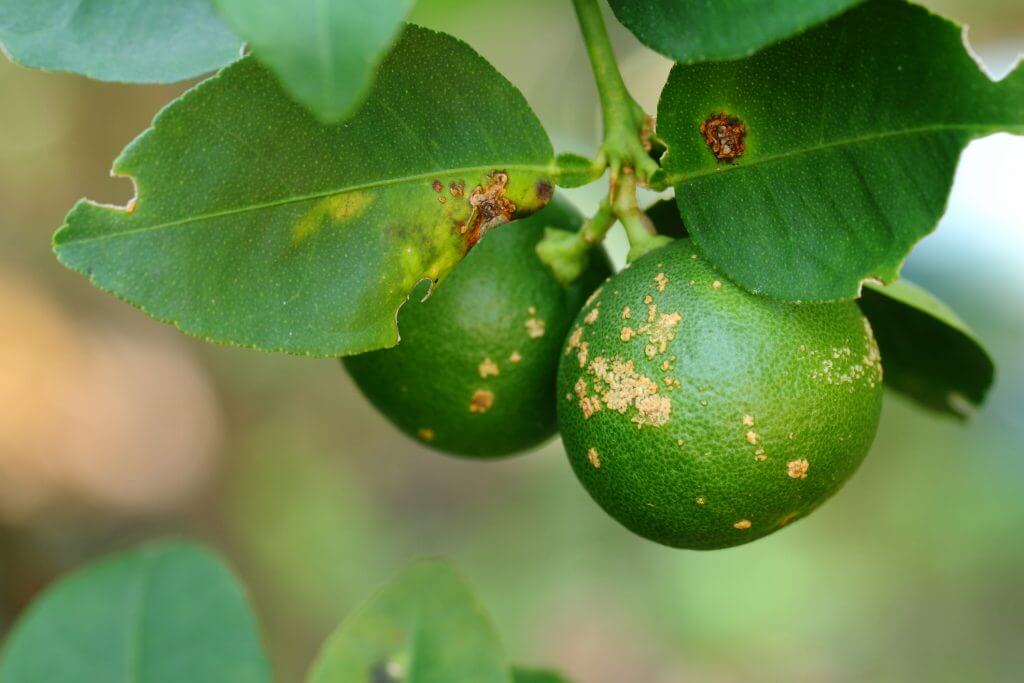

Sooty Mould Fungus
This lemon tree fungal infection can cause black leaves. Aphids, mealybugs, and whiteflies can bring this infection to your tree through their excretions.
To prevent or control sooty mould, address the pest issues first by spraying your lemon tree with Neem oil. Spray on top and underneath the foliage to get to the pests hiding in those spots. Repeat insecticide application in about two weeks.
After controlling the pests, apply a liquid copper fungicide to contain the mould growth.
Greasy Spot Fungus
When your lemon tree has the greasy spot fungi, the underside of its leaves will have yellow-brown blisters. These blisters will eventually look oily as the disease progresses.
Like the previous diseases, a copper fungicide will address the greasy spot fungal issues on your lemon tree.
Brown Rot or Collar Rot
The phytophthora fungus causes brown rot or collar rot on your lemon tree. When your tree is infected, hard dark brown patches will appear on the trunk. There may be some excretion of liquid oozing out of the affected area.
The brown patches will eventually dry and crack, leaving sunken marks along the trunk.
This fungus can come from moist soil. Remove the infected branches by pruning and treat with the appropriate fungicide.
Anthracnose
Same as the brown rot, the anthracnose is caused by a fungus from wet soil, usually after prolonged rain. This fungus will cause twig dieback, stained fruits, and leaf drop.
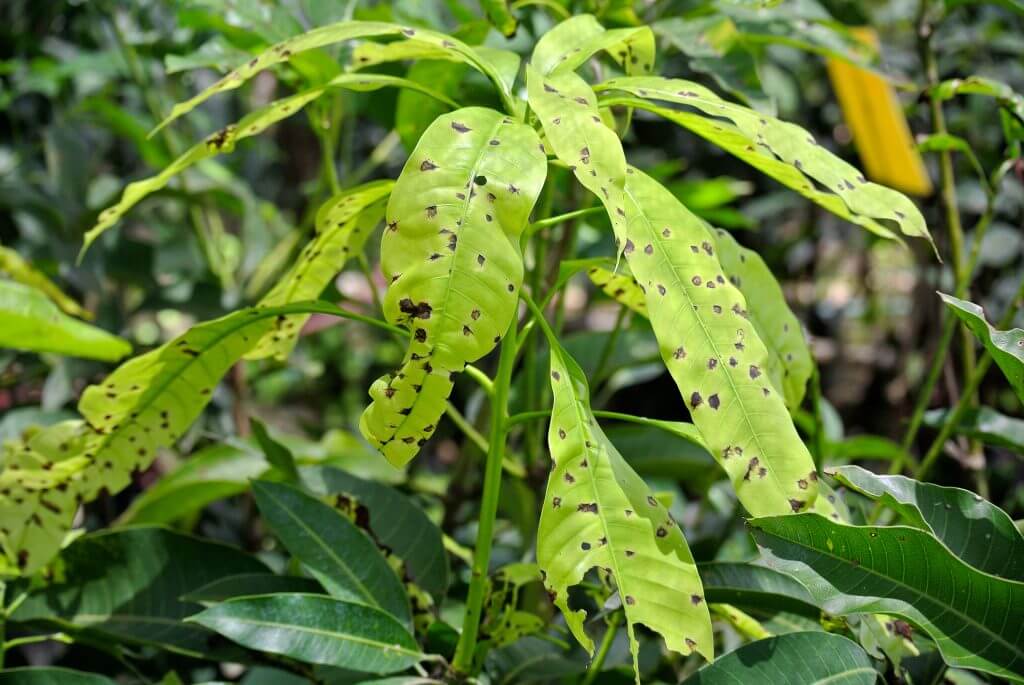

The botrytis fungus, also known as grey mould, is another disease that could affect lemon trees after prolonged periods of rain.
[elementor-template id=”4604″]
[elementor-template id=”6387″]
